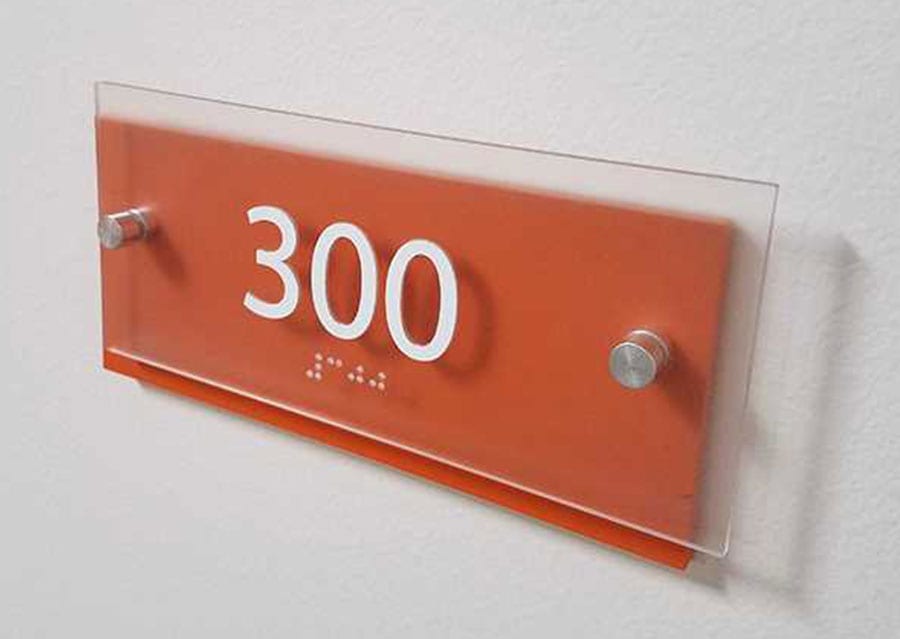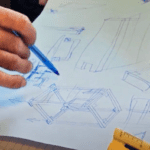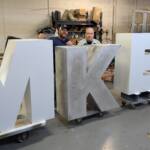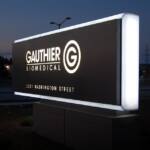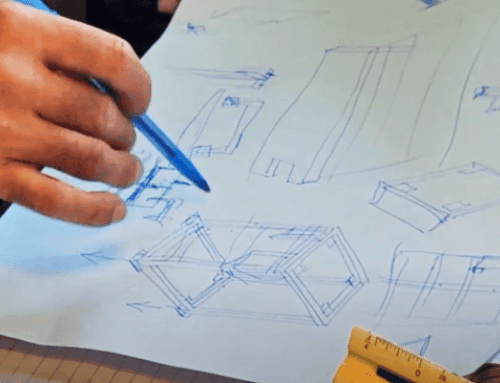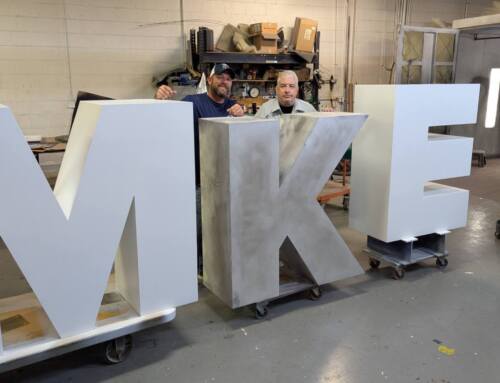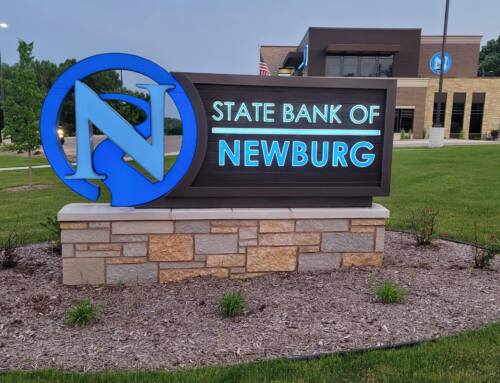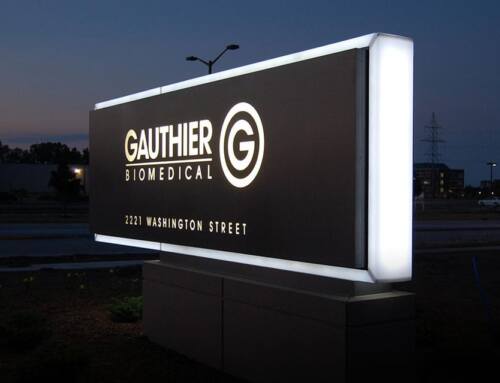Creating effective ADA-compliant signage is about more than just checking regulatory boxes. It’s about producing signage that is accessible, durable, and consistent—especially in environments like hospitals such as Froedtert Hospital and Children’s Hospital, where we’ve done a number of installations. It’s also highly useful for signage in other applications where quality and clarity are key, such as hotels, schools, public buildings and large office buildings.
Here’s why we chose this method over alternatives like routed or appliqué signs.
We share a few thoughts here about why we use photopolymer process for these applications.
Consistent ADA Compliance, Built In
Photopolymer is particularly well-suited to ADA signage because of how it’s manufactured. The process involves exposing a photopolymer sheet to UV light through a film negative. The result is a single, solid piece where raised characters and braille are formed directly from the sign substrate.
This eliminates alignment issues common with applied or manually added elements. Because everything is part of a single sheet, spacing, placement, and depth are consistent—crucial for tactile readability and regulatory compliance.
Excellent Durability in Demanding Spaces
In hospitals, schools, and public buildings, signage is subject to frequent contact, cleaning, and sometimes vandalism. Photopolymer signs hold up well because they have no separate layers to peel, crack, or loosen. The raised features are chemically bonded to the substrate, creating a seamless surface that resists damage.
They’re also resistant to:
- Abrasion
- Moisture
- Cleaning agents
- UV exposure (with proper finishing)
For long-term projects or facilities that prioritize longevity and low maintenance, this durability is a key advantage.
Supports Customization Without Compromising Compliance
ADA regulations outline requirements for contrast, font style, size, and tactile elements, but within those boundaries, there’s room for creative design. One strength of photopolymer is its ability to accommodate a wide range of finishes and visual elements.
Photopolymer signs can include:
- Custom colors and textures
- Branded elements like logos or icons
- Non-standard shapes or framing systems
This makes it possible to maintain ADA compliance while preserving a building’s visual identity—important for hospitality, mixed-use developments, and branded environments.
Efficient Production for Large-Scale Projects
For projects with a high volume of signage—such as apartment complexes or hospitals—efficiency matters. Photopolymer signage can be produced quickly and with repeatable accuracy. The process lends itself well to batch production, meaning each sign comes out consistent with the last.
This scalability helps streamline both project timelines and budgeting. Two criteria every Project Manager loves to hear!
Environmentally Responsible Manufacturing
Photopolymer signage also aligns well with your sustainability goals. Many manufacturers (including Sign Effectz) use water-washout systems, which reduce the need for harsh chemicals. The process also generates minimal waste compared to more subtractive methods like routing.
For organizations with green building standards or LEED goals, this is a critical success factor. Like we say around here, go green!
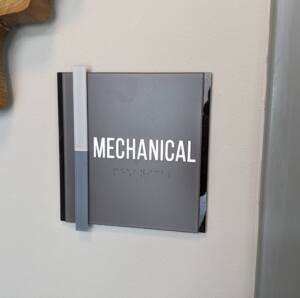
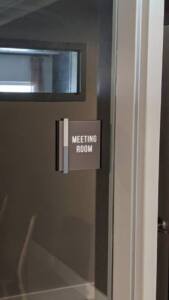
Final Thoughts
While there are multiple ways to produce ADA-compliant signage, photopolymer continues to be a go-to solution for certain applications. It delivers accuracy, durability, and design flexibility. And it performs particularly well in environments where signs are handled regularly and where consistency across hundreds of pieces is required.
Because we believe strongly in giving you options, we have several other ways to manufacture ADA-compliant signs:
- Raster Bead
- Laser & Applique
- Laser Cut 2-Part Acrylic
- Reverse Engraved
- Vinyl Overlay
If you’re planning an ADA signage system, reach out to one of our sign experts.
